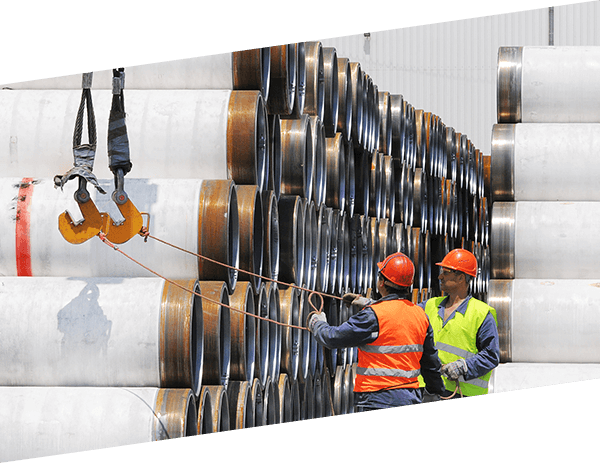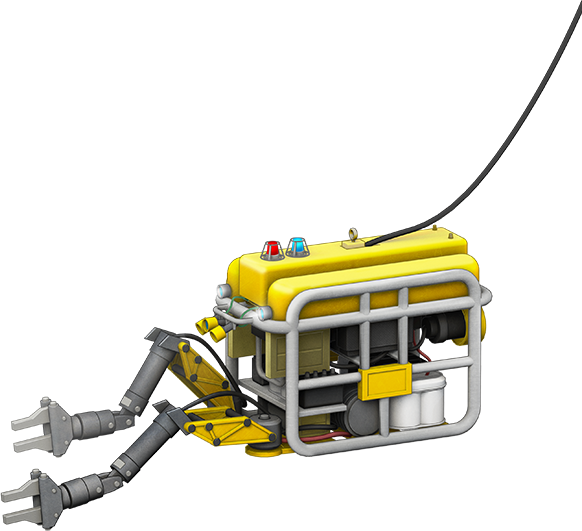As the first 81 centimeter diameter system laid at depths exceeding 2 kilometers, TurkStream advances the technical boundaries of the industry.
A Unique Project
Designed for maximum safety
Each of the two offshore pipelines of TurkStream is made up of thousands of individual pipe joints of 12 meters length. The pipes have been made from 39 millimeter-thick specially designed carbon manganese steel plates that allow them to withstand the huge pressure under the sea. Pipes laid in shallow waters closer to the shore have been coated in concrete for added stability and protection against marine activities.
TurkStream, which has become operational on 1 January 2020, offers a reliable energy supply for Turkey and Europe with its annual capacity to deliver 31.5 billion cubic meters of natural gas.
Pipelines are one of the safest, most convenient and most efficient ways to transport natural gas.
.png)
Pipes laid in shallow waters were coated with
Concrete
coating
Steel pipe
wall 3.9 сm
External coating of three-layer polypropylene protects against corrosion
Internal
epoxy coating
against friction
Offshore pipe laying
The biggest construction vessel in the world, Pioneering Spirit, carried out the offshore construction of the TurkStream Project.
The pipe joints were welded to each other and to the main string on board. Each weld was tested and coated for protection before the pipeline string was lowered into the water.
Pioneering Spirit completed the construction of the two pipelines across the Black Sea over 15 months, adding new sections to the pipe string as it progressed. Operating around the clock, the vessel laid an average of five kilometres of pipeline each day. In August 2018, it set a world record in the industry by constructing 6.3 kilometers of the pipeline in a single day. Offshore construction in the deep-water section was completed in November 2018.

After production, individual pipes were stored in ports on the Black Sea coast.
Production of plates
Plates
Welding
Ultrasound and x-ray
Special Coating
Shipment to the port
Shipment to the storage
Intermediate storage
Shipment to the vessel
Special vessel

A new benchmark in the industry
The technical and material specifications of TurkStream set new benchmarks for the gas transport industry. The TurkStream Offshore Gas pipeline is the largest system ever laid at depths as low as 2,200 metres.
Underwater Visual InspectionUsing a Remotely Operated Vehicle (ROV), it is possible to film in the deep seas to investigate objects in detail and perform a visual inspection of the route, the pipeline and other structures that are installed. For its main activities, the ROV carries other instruments as well, such as sonars, magnetometers, pipe-trackers, and manipulators. |
|
High-resolution seismic surveyA vessel produces a strong sonic pulse that hits the seabed and propagates under the surface. The seabed reflects a part of the pulse which returns, whilst a part travels through the seabed. Measuring the timing, geometry and the intensity of the returns of the sonic pulse, geophysicists can map the different layers underneath the seabed. |
Echo soundingA multi-beam echo sounder (MBES) emits several acoustic pulses, which hit the seabed or any object that is on the seabed, and are reflected back in different times and geometries, depending on the shape of the object. Hence, a 3D model is formed which shows the seabed topography, the shape and the depth of objects. |
Sub-bottom profile (SBP) surveyA transducer emits a sound pulse vertically towards the seafloor, and a receiver records the return of the pulse. This technique helps create an image of the layers of sediment under the seabed. As a mini-seismic tool, the SBP is usually towed closer to the seabed, if not directly mounted on a ROV. |
Side scan sonar (SSS) surveyThe SSS is used to create an acoustic image of large areas of the adjacent sea floor, by scanning up to 500 meters each side of the equipment in order to investigate any possible obstacles near the route. The sonar uses high frequency pulses, and can be towed directly from the vessel, or installed on a ROV. By analyzing the acoustic shadow, the time of the pulse, the intensity and other acoustic factors, the dimensions of objects, obstacles or seabed features can be determined. |
Seabed samplesUsing a range of different techniques, samples are taken from the seabed at different depths, and analyzed in a laboratory to determine the environmental, geological or geotechnical properties. The result of these analyses, studied in correlation with other geophysical properties of the seabed, are used to produce a geological map of the sub-seabed, and to ascertain if the seabed is suitable for pipeline laying. |
Exploring the Deep Seas
With the expertise of specialized engineers, TurkStream used advanced pipeline design and technology to create a pipeline that safely withstands high pressure. The system has been divided across 2 separate gas pipelines, welded together from
With these unique design characteristics, TurkStream is a project that has set new standards in offshore gas transportation.
Ensuring the safety of the pipeline
The pipe will be periodically inspected from the inside, by running pipeline inspection gauges, or PIGs, through it. The PIGs enter the pipeline at the Russian landfall facilities and are propelled by the gas flow towards the Turkish landfall facilities, where they are removed via special PIG receivers.
Critical sections of the pipeline route, including slopes, trenches, anomalous seabed areas, and the continental shelf break, will be surveyed more frequently: first annually, and then as often as necessary based on monitoring results.

